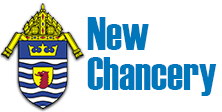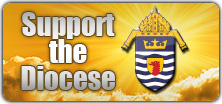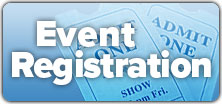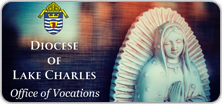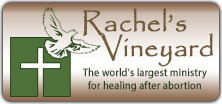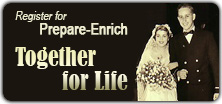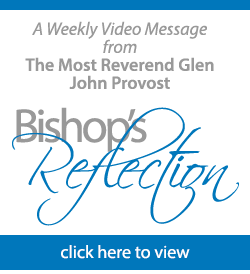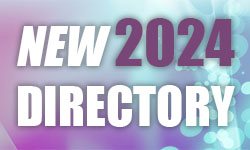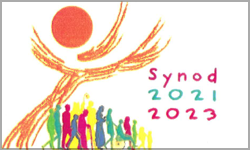This email address is being protected from spambots. You need JavaScript enabled to view it.
Diocese of Lake Charles
LAKE CHARLES — Some of the greatest Catholic scientists and mathematicians were in the spotlight during a “Night at the Museum” on March 15 at Our Lady Queen of Heaven Catholic School. It was the culmination of the school’s week-long symposium.
The exhibits highlighted significant math and science contributions made by Catholic men and women throughout history, including Louis Braille, Saint Gianna Beretta Molla, Father Gregor Mendel, Nicolaus Copernicus, and Saint Albert the Great to name a few.

a “Night at the Museum” on March 15 at Our Lady Queen
of Heaven Catholic School. Their book, “Brilliant!” was the
inspiration behind the theme for the school’s week-long
symposium highlighting significant math and science
contributions made by Catholic men and women throughout history.
Inspiration for the theme was based on the book, “Brilliant! 25 Catholic Scientists, Mathematicians, and Supersmart People,” written by David Michael Warren and illustrated by his wife, Jaclyn Warren, who were special guests for the “Night at the Museum.” Their book was written specifically to help children understand that religion and science are compatible.
Grade 7-8 teachers Connie Houssiere (religion) and Kaylin Trahan (math) teamed up to chair the symposium.
“The book was brought to my attention by Kaylin. After reading it from cover to cover and running it by Pam Fontenot, our Director of Religious Education, we all agreed it would be a great theme for the symposium,” said Houssiere.

of Bingen, assists students during the Visions of Harmony
exhibit. St. Hildegard was a philosopher, pharmacist,
playwright, musician, botanist, and doctor of the Church.
Each teacher — no matter the grade level — chose one or more scientist or mathematician from the book to bring alive in their classrooms throughout the school year, according to Houssiere.
“Our hope was for the teachers to find something already being taught in their curriculum and go above and beyond to make it exciting for their students,” she said.
Featured in the book are saints, priests (including Pope Francis), doctors, educators, mathematicians, musicians, and scientists from many fields.
A variety of “museum” galleries included:
- Space — dedicated to Nicolaus Copernicus, the father of modern astronomy; Father Angelo Secchi, a pioneer in astrophysics; Karin Oberg, an astrochemist; and Father Georges Lemaitre, father of the Big Bang Theory.
- Art — dedicated to Father Henri Breuil, archeologist and natural scientist; and Father Leon Provancher, who identified over 1,000 bugs.
- Science experiments — dedicated to Sister Miriam Michael Stimson, chemist and DNA research pioneer; Louis Pasteur, founder of microbiology and developer of pasteurization; first female physics professor, Laura Bassi; and Blessed Nicolas Steno, father of modern geology.
- Stringed instruments — dedicated to Saint Hildegard of Bingen, a philosopher, pharmacist, playwright, musician, botanist, and Doctor of the Church; Father Marin Mersenne, and Louis Braille, creator of the braille system for the blind.
- Friction and electrical energy — dedicated to Saint Albert the Great, patron of scientists and philosophers and discovered the chemical arsenic; and Laura Bassi, the first female physics professor.
- Shark Tank inventions — dedicated to the Next Generation of Inventors. Following in the footsteps of many scientists and inventors, eighth-grade students came up with ideas for an invention or service that could help others; something new or an improvement to an existing idea. Students were able to vote for their favorite.
“To add an extra twist, we mixed grade levels in galleries throughout the school who focused on the same topics,” said Houssiere. “For example, there were space exhibits from first, second, fifth, seventh and eighth grade. Exhibits from third and fourth grade were featured together on friction and electrical energy, and PreK and third grade presented exhibits on Braille.”

Louis Braille Gallery exhibit. Guests throughout the symposium
were able to take part in learning more about the person who
created the Braille System for the blind. Louis Braille later took
this system, which consists of a six-dot code in various combinations,
and adapted it to musical notation.
Guests took self-guided tours where they could participate in interactive scavenger hunts by scanning QR codes that linked to student-created videos. The school’s STAR LAB exhibit was also available to experience.
Alayna LeFort was one of several eighth graders who helped make videos and create a slide show of pictures. Posters were set up throughout the school for the scavenger hunt.
“I thought it was very cool and unique to have QR codes that people could scan with their phones,” said LeFort. “When the code was scanned, a YouTube video opened to a student-created video about a particular Catholic scientist or mathematician.”
This year’s symposium was a perfect fit for eighth-graders Lizzy Mundy and Reese Dufrene. Science is a favorite subject for both.
“I enjoyed learning about Catholic scientists,” said Mundy. “Being chosen to participate and help with the symposium was an honor. I thought it was cool that it involved all grade levels from the lower PreK students to the eighth graders. Everyone got involved.”
Extracting DNA from strawberries kept Dufrene busy in the science lab at the museum.
“We made a solution, mashed up the strawberries, and mixed it all together and added rubbing alcohol,” Dufrene explained. “When we stirred it, this DNA came out of it. We told the younger kids it was a magical solution. It was very cool!”
The symposium week also included a visit from students and faculty at McNeese Center for the Advancement of Quality Education under the Burton College of Education. They showed middle school students how to control spheros with their fingertips on a tablet and use coding to make a path for the ozobots.
Partner in Education, Westlake Chemical, also visited the second-grade students for a hands-on activity that involved making oobleck, a non-newtonian fluid which has properties of both a solid and a liquid.
Students worked on these cross-curricular projects for the better part of two months, often bringing multiple grade levels together, according to Principal Trevor Donnelly.
“Our students learn best when immersed in these types of ‘hands-on’ projects, where the subject matter becomes an interactive experience. This is what creates a lasting impression,” Donnelly said. “The students had great ownership of their work and were so proud to be able to showcase their talents and all they have learned for their parents and the community to see.”

